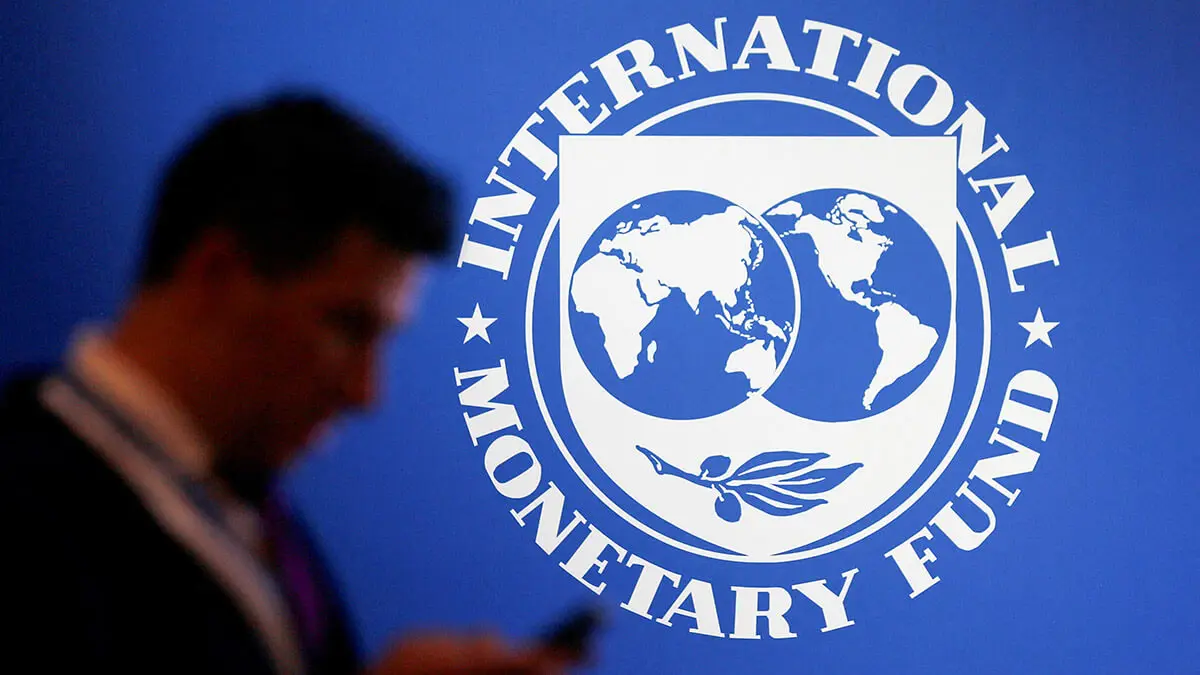The WB and IMF predict a geopolitics-dependent 2025

At their most recent meeting, from 21 to 26 October, the conclusion of the teams from both organisations is that 2025 will face a soft landing in global growth, while the fight against inflation begins to bear fruit.
The IMF estimates that global GDP will close this year with a growth of 3.2% and will repeat the same figure next year, all depending on the current course of the wars, both in Ukraine and the Middle East, not worsening.
For its part, the World Bank is less optimistic and forecasts a global GDP of 2.6% this year and 2.7% in 2025, also conditional on the volatility of commodity prices, mainly oil.
China will not be the economy that will grow the most; in fact, its GDP has been losing steam for a decade and could close 2024, according to the IMF, at 4.8%, and in 2025 it could have a GDP of 4.5%. Once again, India will be the economy with the greatest economic capacity: its GDP this year is expected to stand at 7% and next year at 6.5%.
As for the US economy, both international organisations warn that its direction will depend on the outcome of the elections on 5 November. Republican Donald Trump is proposing a less open economy, more focused on the domestic market; moreover, his threats to impose a series of tariffs not only on China, but also on other emerging and European countries, mean more obstacles, more costs and more inflation.
The IMF is not projecting its scenario based on a post-election context, it is doing so on the basis of current forecasts and thus predicts that the US will close this year with a GDP of 2.8% and in 2025 it estimates it at 2.2%.
Hence, the IMF and the WB are likely to adjust their growth forecasts for the US and the world in January and will do so again for their spring meeting.
European economies stagnant
The IMF does not foresee any major changes or surprising turns in the economic performance of the European economies, which since the subprime crisis in 2008 have first been in the midst of a recession and then emerging from it, but with marginal growth that continues to destroy the European welfare state.
In 2024, this international organisation places Germany as the worst performing economy with a growth of 0% and 0.8% for next year.
What is wrong with Germany? Antonio Pedraza, president of the Financial Commission of the General Council of Economists (CGE), warns that this economy has a ‘seized engine’ with a negative trend that focuses on a Germany facing recession with consumption and domestic demand in free fall, as well as exports.
‘The Teutonic country has been suffering from the collapse of the supply chain, the tap of low-cost Russian energy has been turned off, to which are added the current problems of the Chinese economy, plunged into an unprecedented real estate crisis and paying the toll of a weakening of its foreign trade, the exit of its great factory, in the face of lower world growth’, according to Pedraza.
The Spanish economist recalls that Germany's economic weakness is centred on industry, which has fallen in recent years.
The Spanish economist recalls that Germany's economic weakness is centred on industry, which has fallen by 12% in terms of production over the last five years.
‘This can find no other cause than the weakening of its automobile sector, facing fierce competition in its own territory. These imports of Chinese vehicles into Europe increased by 37 % in 2023, and this continues to grow,’ he explained.
The Volkswagen crisis is the epitome of the crisis in which the German economy is mired: the carmaker recently announced, through its works council chief Daniela Cavallo, that it plans to close at least three plants in Germany.
Cavallo warned the carmaker's 120,000 workers that hard times are coming with job cuts, wage reductions and plant closures in order to ‘survive’ in the face of foreign competition.
In Germany, the EU's economic locomotive is on the verge of derailment and has no intention of correcting its course.
Nor does France have a better outlook: the IMF forecasts a GDP this year of 1.1% and by 2025 of 1.1%, with the impact of the domestic political situation on the economy; the loss of competitiveness, the constant struggles with trade unions and a pension programme that continues to put pressure on public finances are the three headaches for current president Emmanuel Macron, whose government is beset by the ultra-right and the ultra-left.
For its part, Italy, under Prime Minister Giorgia Meloni, is expected to grow by 0.7% this year and 0.8% in 2025; inflation and unemployment, especially youth unemployment, continue to affect the country of the boot.
Of the euro zone, Spain is the slightly more stable economy with a GDP expected to stand at 2.9% in 2024 and 2.1% next year; job and wage insecurity, as well as unemployment rates, are the big pending issues in a nation that continues to reduce inflation; however, people's pockets are suffering a significant loss in purchasing power while they are being squeezed more and more fiscally.
Global inflation is falling
According to the World Bank, the battle against inflation appears to be paying off, and although price pressures persist in some countries, the bulk of them are beginning to see a reduction.
'After peaking at 9.4% year-on-year in the third quarter of 2022, we now project headline inflation to be 3.5% at the end of next year, slightly below the average of the two decades before the pandemic. In most countries, inflation is now close to central banks‘ targets, paving the way for monetary easing in the major central banks,’ according to the WB.
This will be possible unless the war in the Middle East does not lead to a blockade of the main shipping lanes for the movement of goods and impacts the final price of goods and commodities transiting through the affected area.
What does the immediate scenario look like for energy? The international body notes that there is an oil glut: ‘So large that it is likely to limit price effects even if the Middle East conflict intensifies’.
While monetary policy has been on the right track in raising rates and containing demand to deflate inflation, the agency recalls that overall commodity prices will remain 30% higher than in the five years before the pandemic.
The World Bank anticipates that, by 2025, global oil supply will exceed demand by an average of 1.2 million barrels per day; an excess that has only been exceeded twice before: during the pandemic-related shutdowns in 2020 and the oil price collapse in 1998.
The new oversupply partly reflects a major shift in China, which as its growth slows, its demand for oil is falling. The Asian giant is experiencing a slowdown in industrial production and an increase in sales of LNG-powered electric cars and trucks.
In addition, several countries outside the Organisation of the Petroleum Exporting Countries are expected to increase their oil production. The World Bank notes that OPEC has idle capacity, amounting to 7 million barrels per day, almost twice as much as on the eve of the pandemic in 2019.
But what is expected for food prices? The international organisation anticipates a drop in food prices: ‘From 2024 to 2026, world commodity prices are expected to plummet by almost 10% and world food prices, which will fall by 9% this year, will fall by a further 4% in 2025’.
Energy prices are projected to fall by 6% in 2025 and then by a further 2% in 2026. These forecasts do not take into account an escalation of the conflict in the Middle East, Iran has been threatening to block major shipping lanes for cargo shipping lines.
According to Indermit Gill, chief economist at the World Bank Group, falling commodity prices and improving supply conditions may cushion geopolitical shocks.
‘But they will do little to ease the pain of high food prices in developing countries, where food price inflation is double what it is in advanced economies. High prices, conflicts, extreme weather events and other shocks have led to the food insecurity of more than 725 million people in 2024,’ he said.



